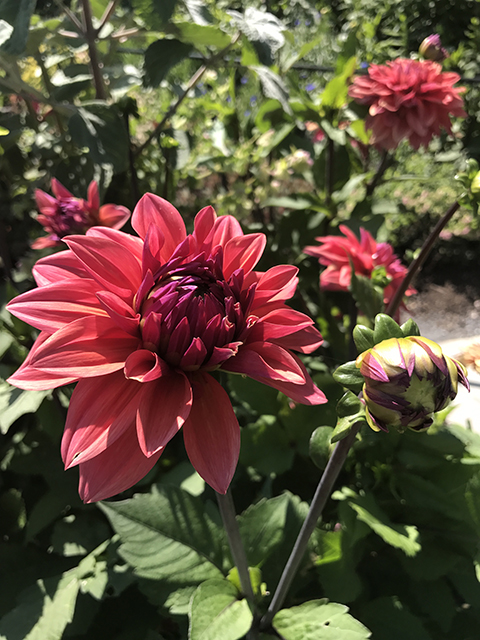
I love this ‘American Dawn’ Dahlia! Find it on the steps leading up to and scattered around the Cleaver Event Lawn. – Anna, horticulturist
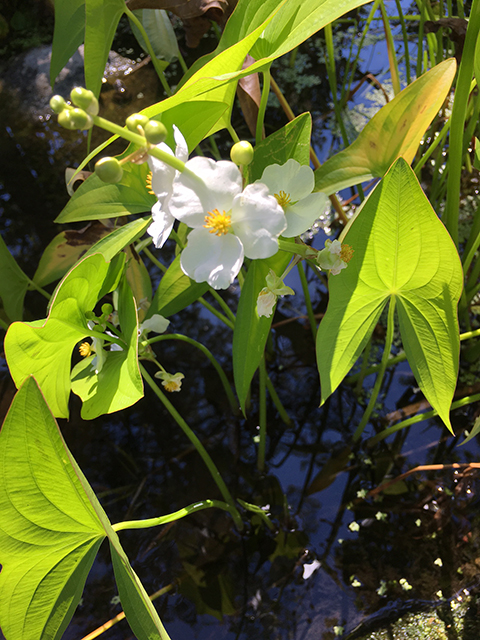
Sagittarius latifolia (Common Arrowhead) is beautiful in the Slater Forest Pond. – Will, horticulturist
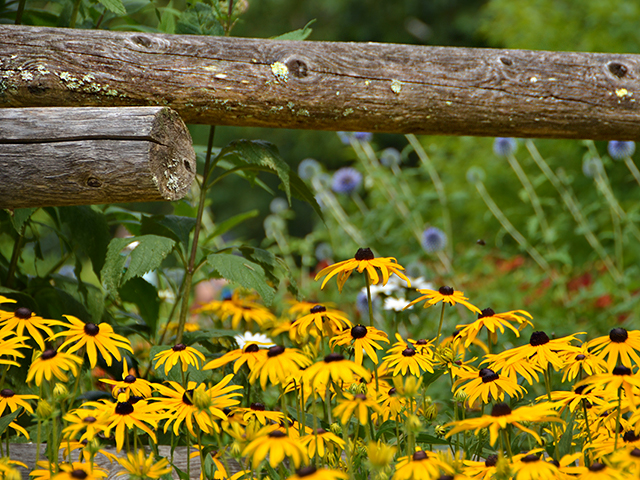
Rudbeckia fulgida, ‘Goldsturm’ Black-eyed Susan. This cheerful native perennial is actually an herb—Native Americans valued this plant for its variety of uses for centuries. Recent studies indicate it may even have a more stimulating effect on the immune system than Echinacea! Just don’t eat the seeds—they’re poisonous. – Amy, writer/editor
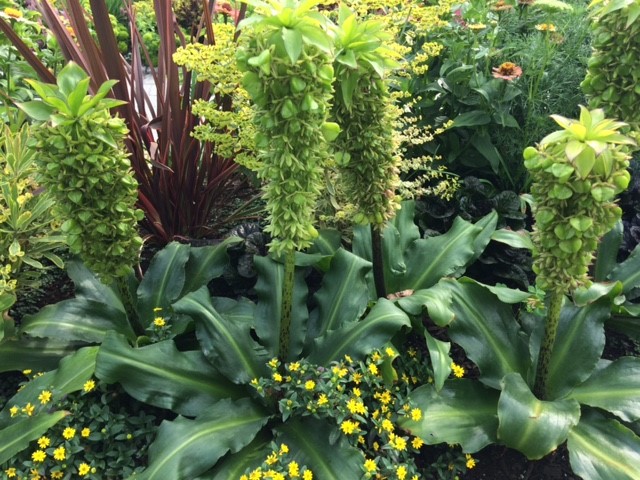
This Eucomis, the pineapple lily, is a stunner in the Alfond Children’s Garden. – Jen, horticulturist
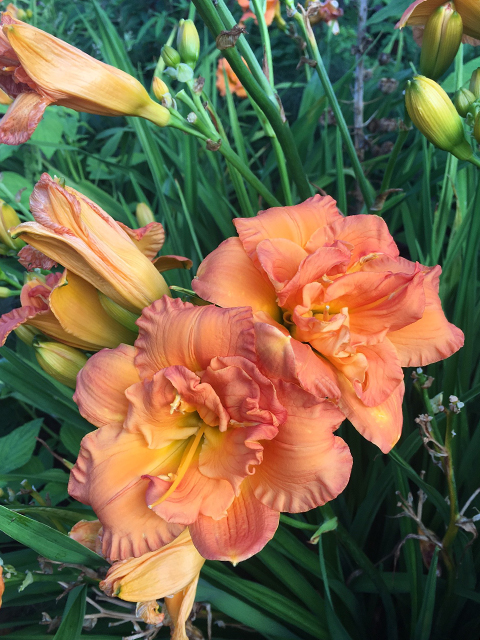
It’s daylily time of year! One of my favorites here at CMBG was actually bred by our very own plant propagator, Dan Robarts. He named this variety ‘Unexpected Extra’, to reflect a strange double flower in a breeding program that didn’t involve double flowers, and also the unexpected incidence of his twins! Great story and fabulous flower! – Syretha, horticulturist
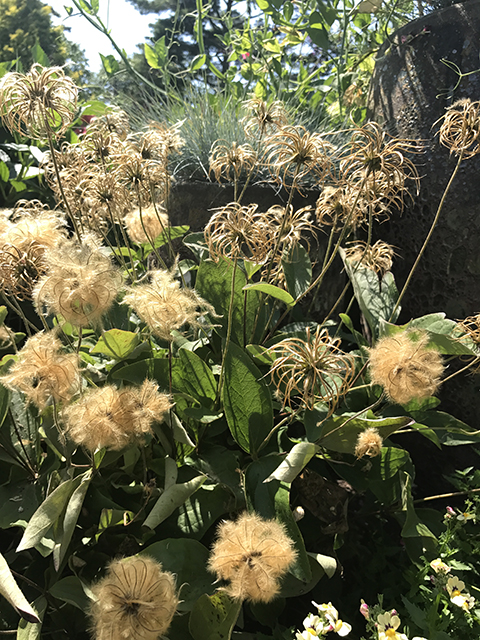
Clematis ochroleuca has cute bell-shaped flowers in the spring, but the real attraction is these funky seedheads! The common name “Curlyheads” is fitting. Find them around the bench area on the Cleaver Event Lawn. – Anna, horticulturist
Asclepias incarnata ‘Cinderella’ shows its garden value by calling to a plethora of pollinators, including our beloved monarch butterflies. A long-blooming and adaptable perennial, this variety of milkweed can be found all over in our gardens and on our grounds but is in flower now and will do so for more than a month in the Bosarge Family Education Center. – Dan, plant propagator
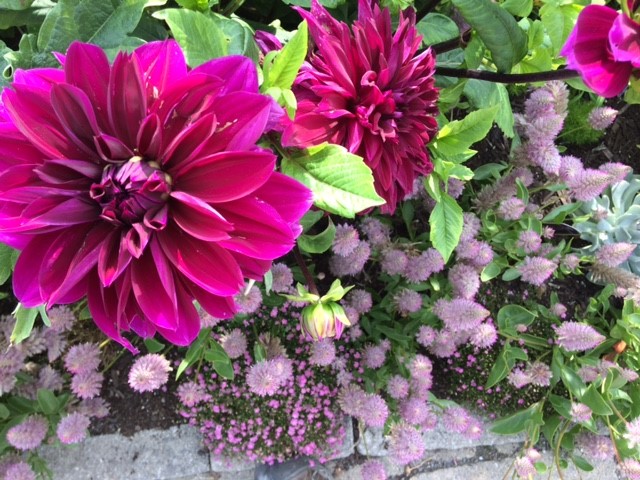
Dahlia ‘Thomas Edison’ is spectacular on the Rainbow Terrace. – Jen, horticulturist

Solidago ‘Sweety’ Goldenrod. So, you probably don’t have to visit a botanical garden to see Goldenrod, but while you’re here, you should give this hardy, golden perennial a few moments of your time. Its flowers, harvested and used either fresh or dried as tea are wonderful for the common cold, allergies (contrary to popular belief, since Goldenrod is insect-pollinated, not wind-pollinated, it doesn’t cause allergies), and sore throats. Fun fact: the colonists called Goldenrod flower tea “Liberty Tea” and drank it instead of the traditional black tea after the Boston Tea Party. – Amy, writer/editor
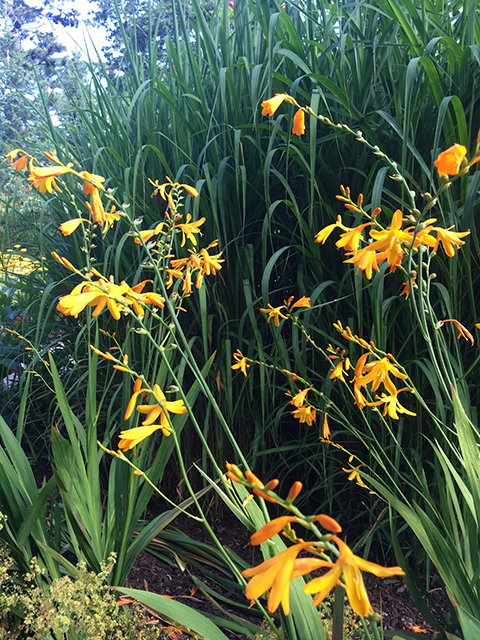
A new perennial I’m trying out this year is Crocosmia, which is a corm in the iris family. I grew them very successfully when I worked in New York City, but while they are hardy to zone 6a (which is what we are here at CMBG), our wet winters will sometimes rot the corms. Here’s hoping they make it! This variety is Crocosmia ‘George Davidson’ – Syretha, horticulturist
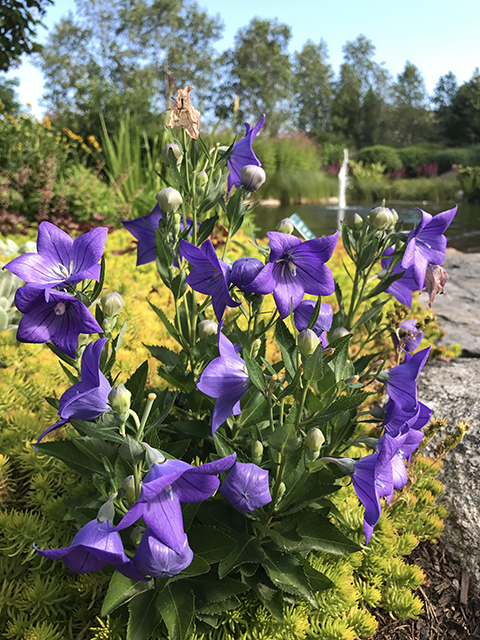
The deep purple of this Platycodon grandifloras ‘Sentimental Blue’ Balloon-flower really pops from the chartreuse carpet of sedum surrounding it in the Lerner Garden of the Five Senses. I love how this is planted on one of the elevated beds so that you can really get a good look! – Anna, horticulturist
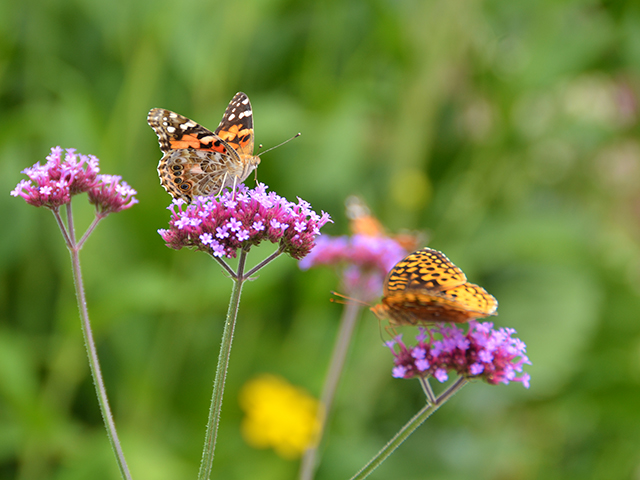
Verbena bonariensis, (Purple-top Vervain) is a gorgeous member of the Vervain family. Although its cousin, common vervain (Verbena officinalis), is plant rich in herbal attributes—it’s been used to treat everything from snakebites to headaches to restless sleep. But no matter which Vervain you meet, they’re all steeped in lore. Its sacred plant status dates back to Egyptian times, where it was thought to have first sprung from the tears of Isis. The Greeks called it ‘holy plant,’ and in Medieval times it was both used as protection and (rumor has it) was a common ingredient in witches’ brews… – Amy, writer/editor